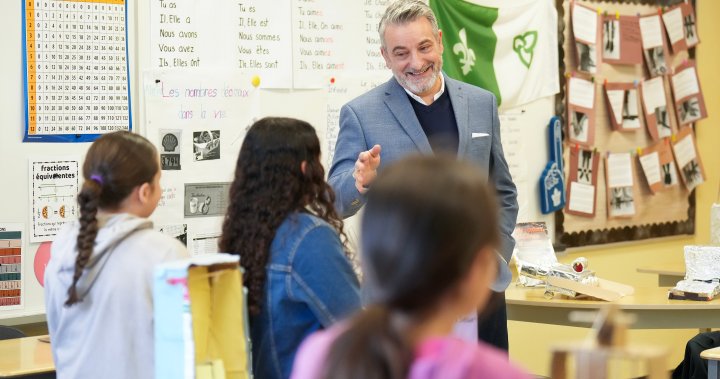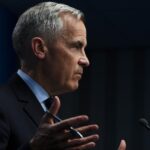The spotlight fell on Saskatchewan’s education system this week as a new report from the Canadian Centre for Policy Alternatives raised serious questions about provincial priorities in classrooms across the prairies.
Walking through Regina’s downtown on Tuesday morning, I couldn’t help but notice parents clustered outside coffee shops, many discussing the findings with visible concern. The 87-page analysis, titled “Saskatchewan’s Education Crossroads,” suggests that while government funding announcements make for good headlines, the actual dollars reaching students haven’t kept pace with enrollment growth or inflation.
“We’re spending more than ever on education,” Education Minister Jeremy Cockrill told reporters at the legislative building. “This government has increased the education budget by nearly 40 percent since taking office.”
But Saskatchewan Teachers’ Federation president Samantha Becotte sees it differently. During our conversation at her Saskatoon office, she pointed to crowded classrooms and dwindling resources.
“When you account for inflation and increasing student numbers, particularly those with complex needs, we’re actually operating with less per-student funding than we had a decade ago,” Becotte explained, gesturing toward a chart showing per-pupil spending adjusted for inflation has dropped nearly 8 percent since 2016.
The report’s timing couldn’t be more politically charged, landing just as school divisions finalize budgets for the coming year. In Regina Public Schools, trustees are wrestling with a $4.3 million operational shortfall despite receiving what the province called a “record investment” in March’s budget.
Numbers from Statistics Canada back the report’s core findings – Saskatchewan’s education spending as a percentage of GDP has fallen from 3.7 percent in 2014 to 3.1 percent today, now ranking ninth among provinces. Only Alberta spends less proportionally.
At Arcola Community School yesterday, I watched as teacher Dana Hines navigated a classroom of 28 students, including four requiring specialized learning plans. “We make it work because we have to,” Hines said during her preparation break. “But something’s got to give. Either we get more resources or we accept that some kids won’t get the attention they deserve.”
The provincial government maintains its commitment to education remains strong, pointing to the recently announced $3.7 billion education budget as evidence. However, school divisions argue much of that money is dedicated to building projects and doesn’t address operational shortfalls affecting daily classroom experiences.
The debate highlights a fundamental disagreement about how to measure educational investment. Government officials emphasize raw dollar amounts, while education advocates focus on inflation-adjusted per-student spending – a metric that shows Saskatchewan falling behind.
Parent council member James Whitaker told me outside Campbell Collegiate that the numbers debate misses the human impact. “My daughter’s class has 32 students. Her teacher is amazing but stretched impossibly thin. No budget announcement changes that reality.”
Perhaps most concerning in the report are comparisons showing Saskatchewan now trails most provinces in key performance indicators like standardized test scores in reading and mathematics. Once a middle-of-the-pack performer nationally, Saskatchewan students now rank near the bottom in science and math assessments.
“It’s not just about money,” explained education policy researcher Dr. Pamela Osmond-Johnson from the University of Regina. “But adequate funding creates the conditions where good teaching and learning can happen. Without it, we’re asking educators to perform miracles.”
The ministry’s response to the report has focused on highlighting recent investments, including $53 million for classroom supports announced in the spring budget. Critics point out this came after years of effective cuts when accounting for inflation and enrollment growth.
At the heart of this debate lies a question about Saskatchewan’s priorities. The province maintains some of Canada’s lowest corporate tax rates while education funding struggles to keep pace with neighboring jurisdictions.
“Every government makes choices about where to invest,” NDP education critic Matt Love said during a phone interview yesterday. “This government has chosen tax breaks for large corporations over properly funding our kids’ classrooms.”
For teachers like Michael Peterson at Thom Collegiate, the political back-and-forth feels disconnected from daily classroom realities. “I’ve been teaching for 18 years, and I’ve never seen resources stretched this thin,” he explained after school hours. “We’re buying our own supplies, working through lunches, and still can’t meet all the needs we see.”
The Canadian Centre for Policy Alternatives report recommends increasing education funding to 3.9 percent of provincial GDP – the national average – which would mean approximately $280 million in additional annual investment.
Whether such recommendations gain traction remains to be seen. What’s clear from conversations across the province is that the gap between political narratives about education funding and the lived experiences of students, parents and teachers continues to widen.
As one Regina parent put it while picking up her children yesterday: “I don’t care about percentage points or political talking points. I care that my kids’ school just cut its music program while class sizes keep growing. That tells me everything I need to know about our priorities.”






